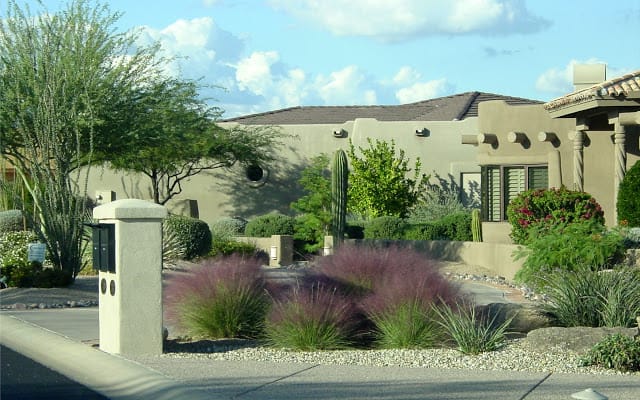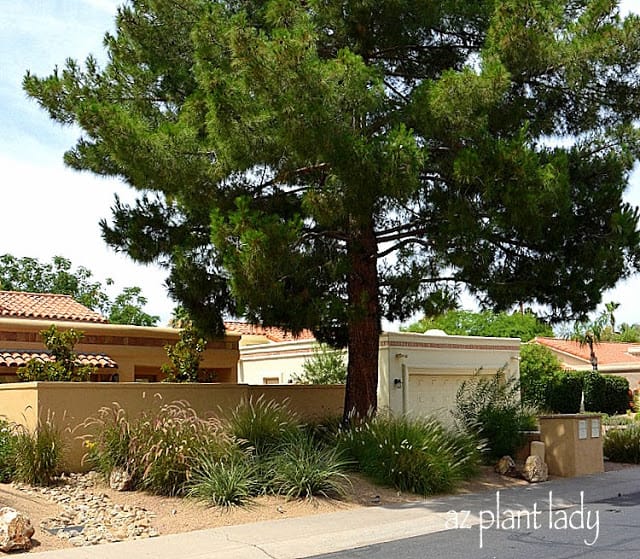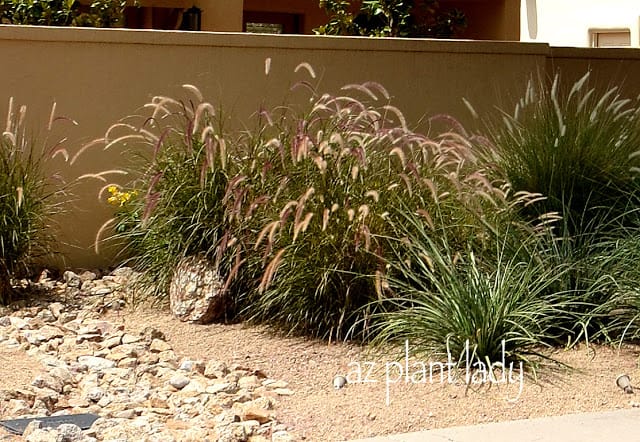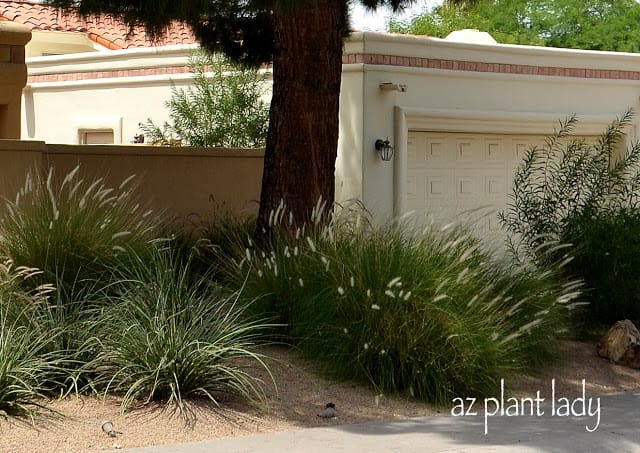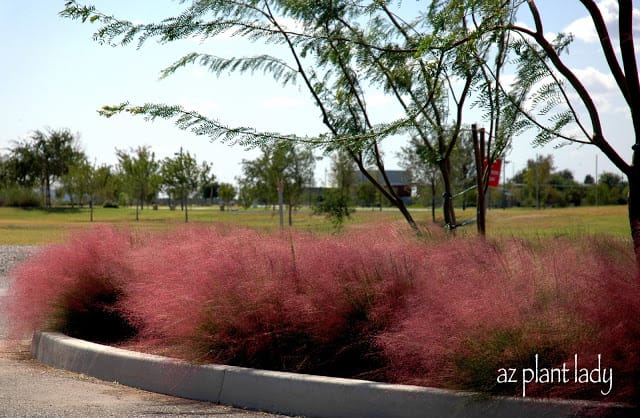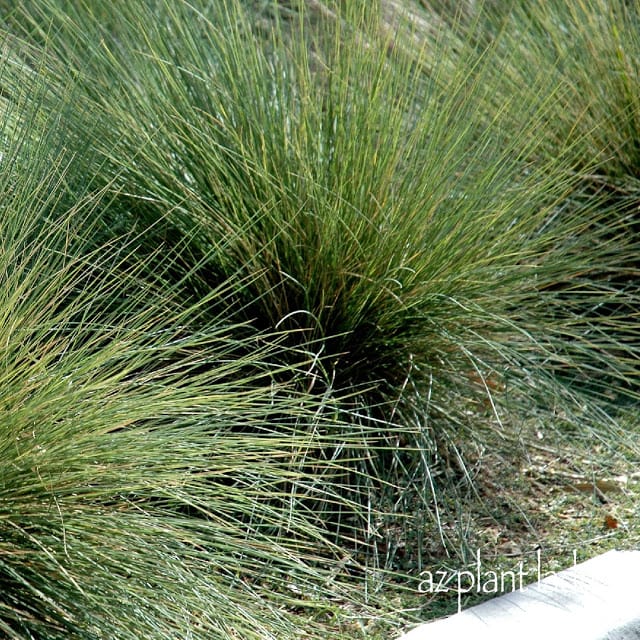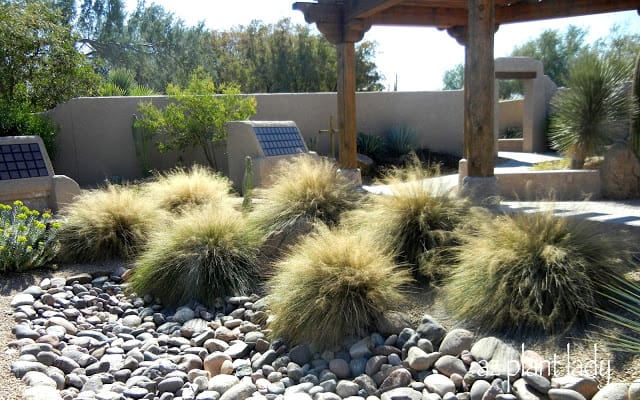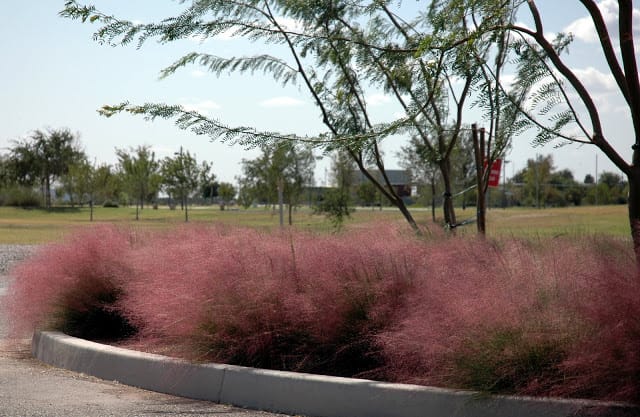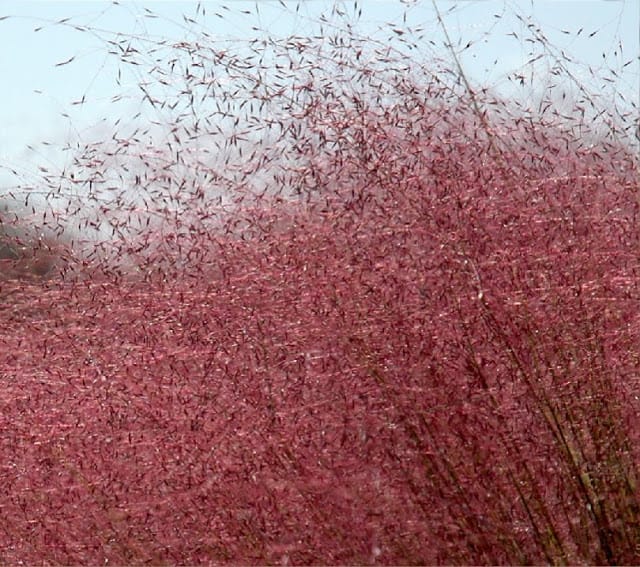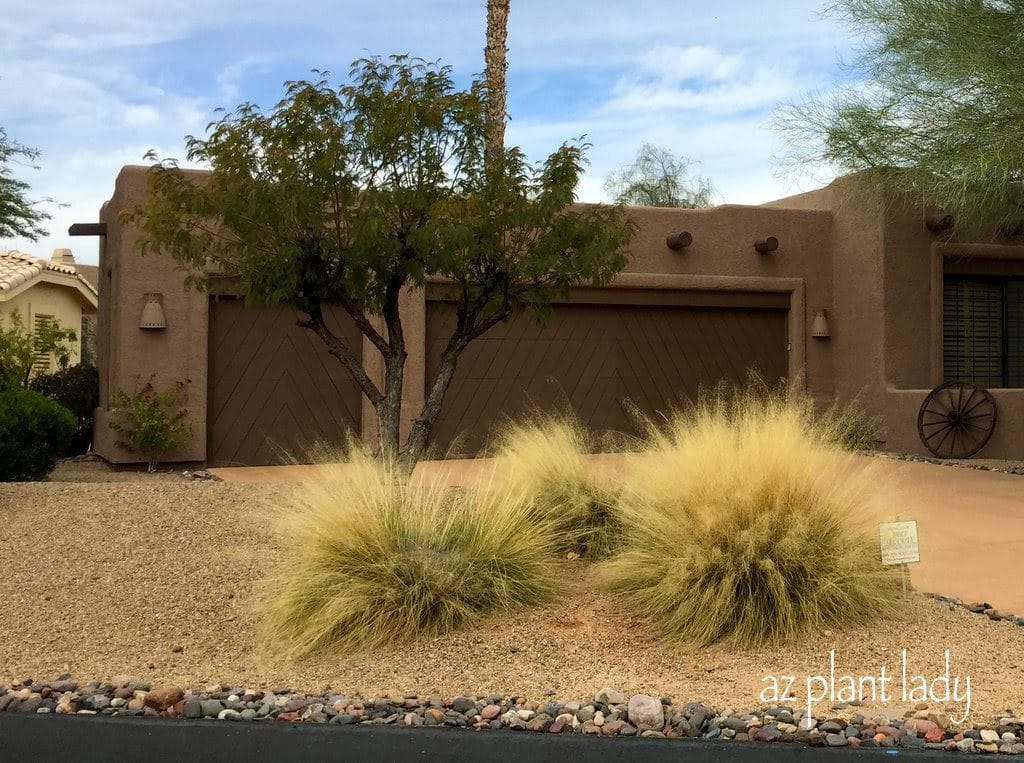Last week, as my husband and I, were pulling out of our local Home Depot when I saw what looked like mini Christmas trees throughout the parking lot islands.

mini Christmas trees
I grabbed my cell phone and took a picture of these funny-shaped plants.
Do you want to know what they are?
No. They aren’t Christmas trees…
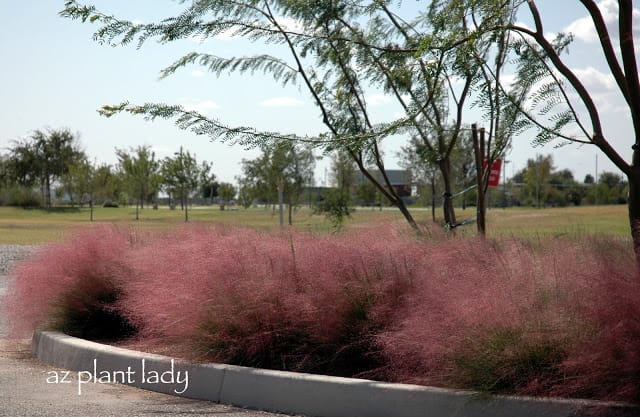
Those cone-shaped plants are in reality badly pruned Pink Muhly (Muhlenbergia capillaris) grasses.
These are my favorite ornamental grasses for the desert climate and although they are badly pruned, they did get some things right.
– For one, Pink Muhly is a great plant for parking lot islands as they can handle full sun.
– In addition, they were pruned at the right time of year.
Just not the right way…
Pink Muhly grasses should be pruned back to 3 inches in height, straight across when the last frost date has passed. In the Phoenix area, where I live, that is early March.
Believe it or not, pruning them the correct way is easier than making them cone-shaped and once the warmer temperatures of spring arrive, these beautiful ornamental grasses will leaf out again.
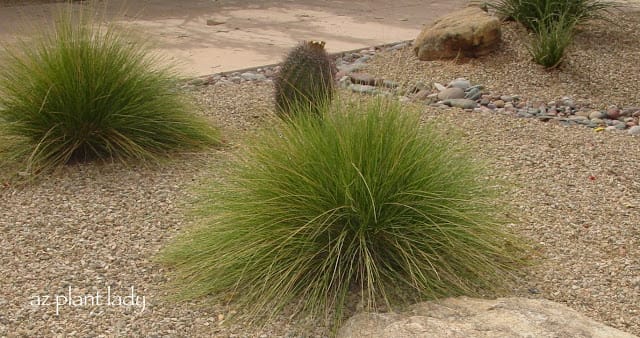
Once fall arrives, they produce lovely, burgundy plumes…

In winter, the plumes will fade and become straw colored, which adds a nice touch of wintery color.
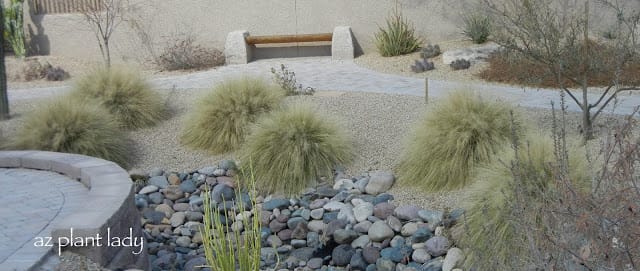
The Pink Muhly grasses, below, weren’t pruned the right way either.
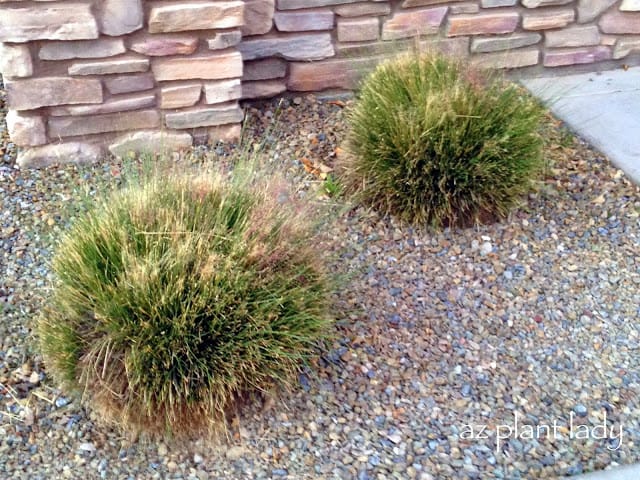
They resemble rounded balls and weren’t cut back enough. But, they look much better than the mini Christmas tree-shaped ones. Don’t you think?
I love these grasses and have planted them in many areas, including along golf courses, churches, and other common areas. And, I just recently planted them in my backyard around my flagstone seating area.
